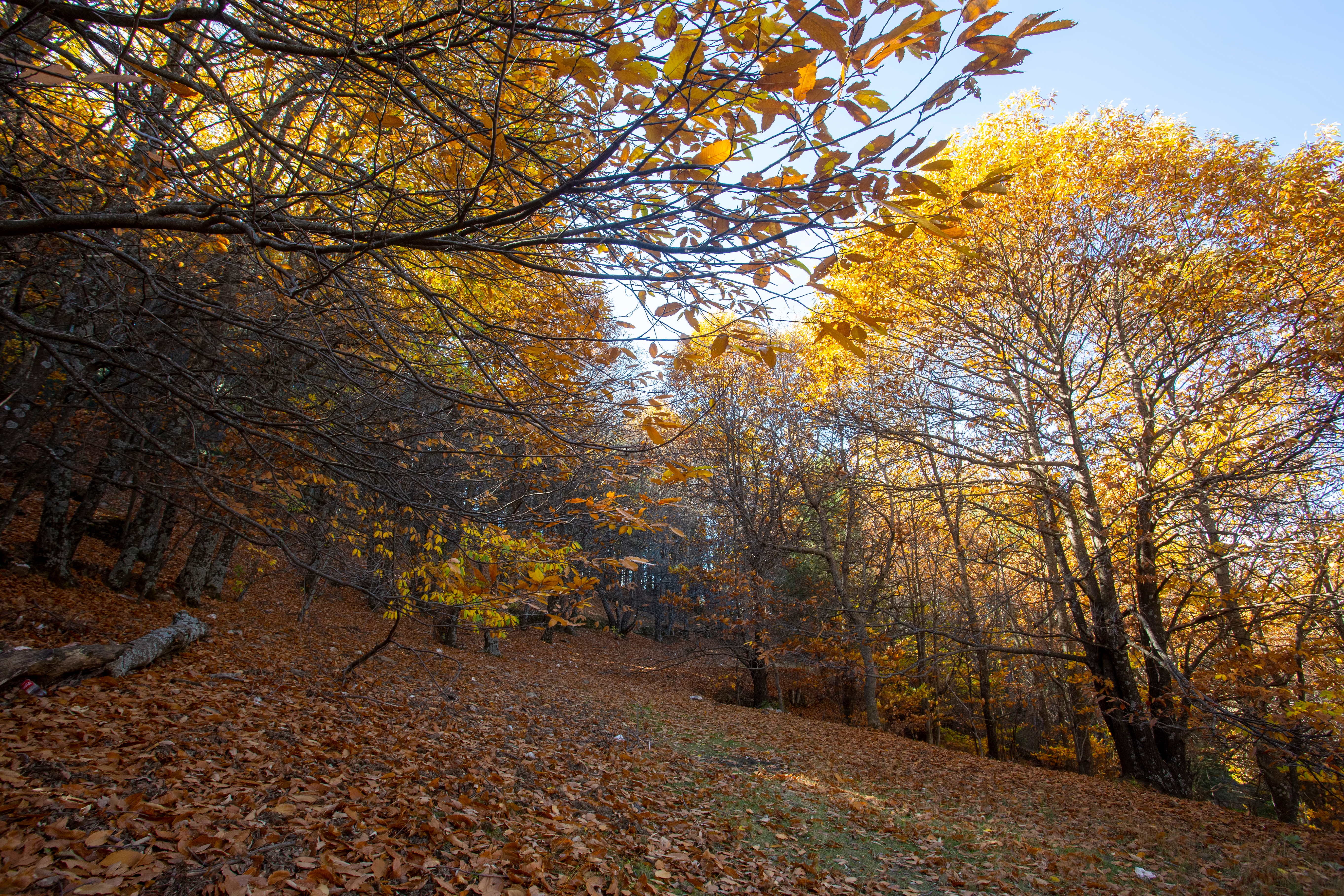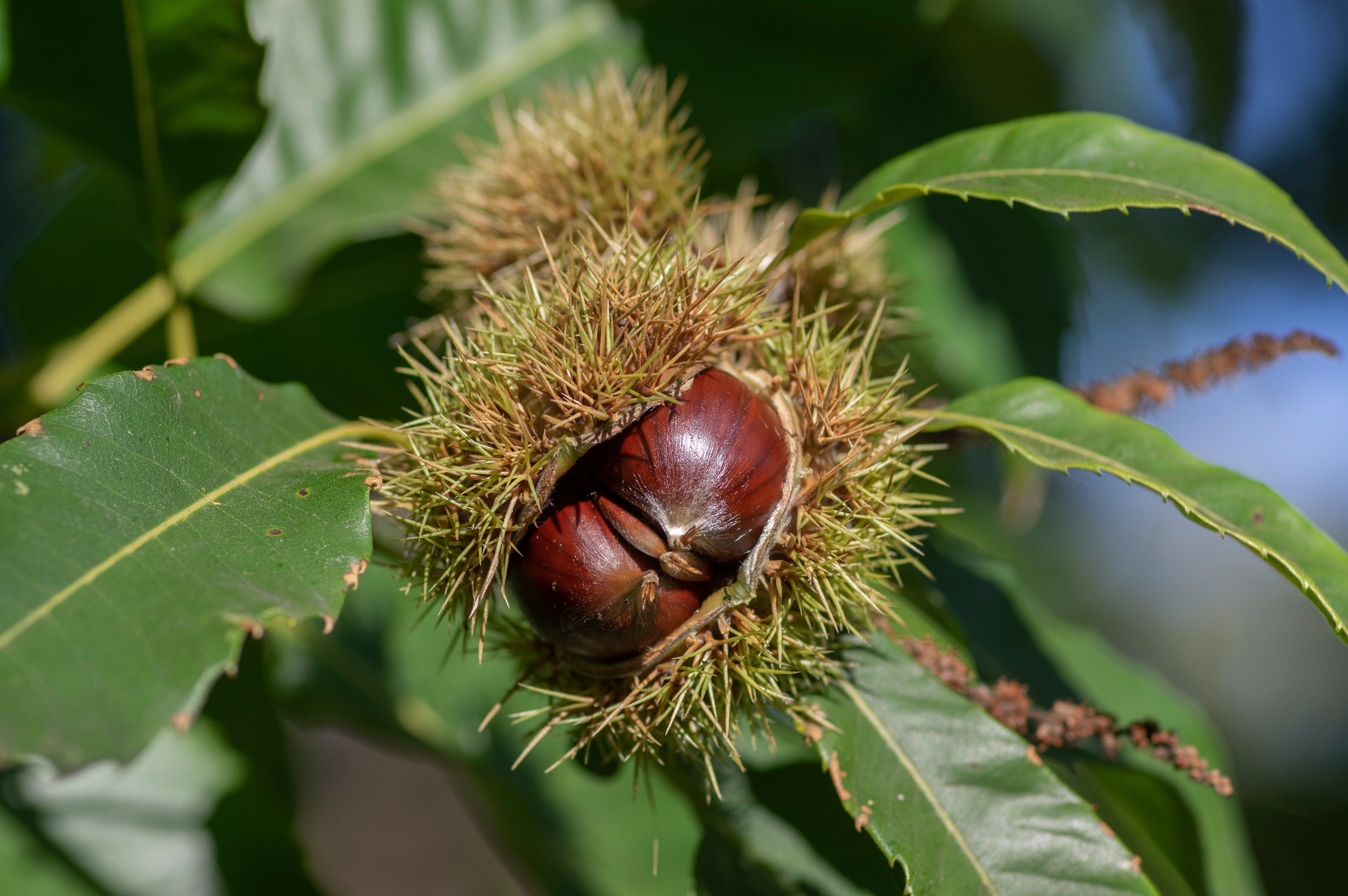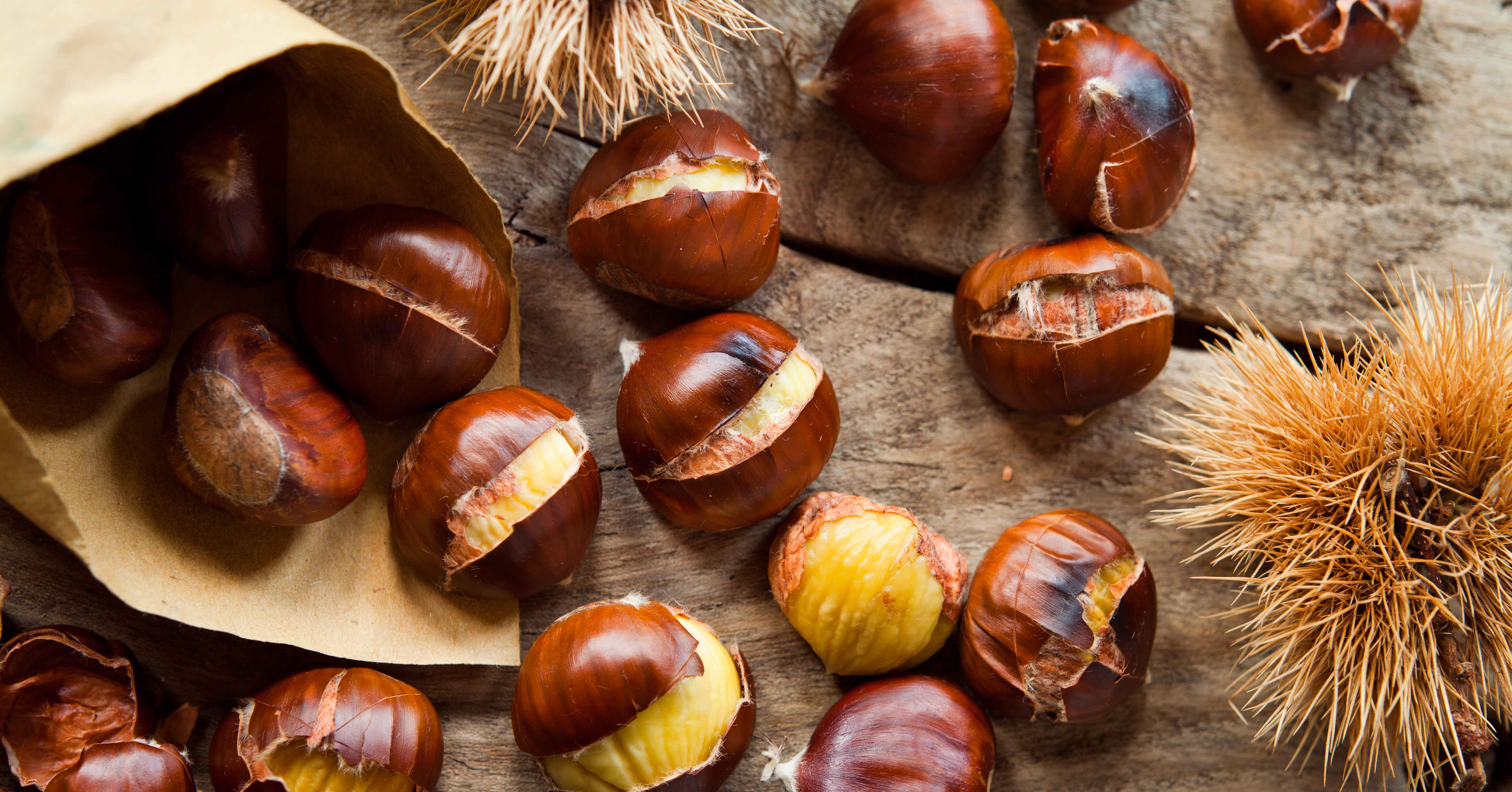Chestnut Season

By Jose Luis Gallego, environmental communicator (@ecogallego)
Although climate change is increasingly delaying the arrival of autumn, it is still one of the loveliest moments for woodland walks, especially in deciduous forests whose variegated colour palette makes for one of the most beautiful autumnal landscapes on the Iberian Peninsula.
Among all the tree species that make up these deciduous forests, the sweet chestnut holds a special place. Scientists identify the European or sweet chestnut by the name Castanea sativa (other species exist in other parts of the world), and it is undoubtedly one of the most distinctive trees found in the woodlands that blanket the mountain ranges of the northern Iberian Peninsula.
This spectacular member of the Fagaceae family, a relative of beeches and oaks, sports a broad, elongated crown with thick branches that spread out into a dense and asymmetrical canopy that can reach monumental proportions. The distinctive trunk has greyish brown bark with grooves that spiral upward around the tree – these vertical fissures deepen with age. Chestnuts can develop astonishing girth and hollow out into veritable tree caves, often sought out as shelter by wild animals, as well as shepherds and others who make the countryside their home.

The chestnut’s enormous leaves can grow to a length of 20 centimetres. Oblong and petiolate, the leaves alternate on the stalk and have a deeply serrated edge. The leaf surface is glossy, dark green in colour, with a matte yellowish green underside. In addition to its broad dense canopy, the chestnut can grow to heights of more than 30 metres and trunk girths of 10 metres. The north of the Iberian Peninsula is home to chestnuts that are over 1000 years old.
Chestnuts bloom in June, developing long, fuzzy, yellowish catkins of male flowers that grow in clusters next to the petiole, giving the canopy a very distinctive hue in the summer, as though someone had decorated the treetop. The female flowers are scattered across the same tree.
Chestnuts take a very long time – over 50 years – to produce fruit. Sweet chestnuts are so popular and recognizable they don’t require a description, but few people would be able to identify the nuts when wrapped in their characteristic husk: a round spiky shell, pale green in colour and about the size of a golf ball, containing up to three chestnuts. The shells crack once the fruit is ripe, usually between October and November.

The ancient Romans cultivated the sweet chestnut as a fruit tree and planted it throughout the northern Iberian Peninsula, which offered ideal climate conditions for the species. For years, the chestnut fruit was a mainstay of the local population’s diet, not only because of its delicious taste, but because it is a rich source of nutrients, containing significant amounts of potassium, iron, zinc, copper, phosphorus, sodium, calcium, magnesium, and vitamins B, C, and E, and many more.
Although tasty when raw, chestnuts are traditionally roasted in Spain, giving rise to the popular custom of castañadas in late October and early November around All Saints’ Day (celebrated on 1 November). Whether as part of a traditional celebration or an informal friend and family get-together, castañadas consist of gathering around a fire to roast and peel chestnuts, enjoying the season’s most characteristic aroma and flavour.

Far from the forest, the traditional figure of the castañera – the chestnut seller who set up shop on city streets – was, for many years, the herald of autumn for urban dwellers. Clutching a paper cone of warm chestnuts helped combat the cold, and their flavour soothed the spirit of passers-by. Nowadays, the rise in global temperatures and summer-like climate conditions that persist well into autumn have caused the number of chestnut vendors in Spanish cities to dwindle rapidly. The same is true of the chestnut trees themselves, one of the species in urgent need of sweeping protections in response to climate change and the forest pests which are decimating its populations.
In Spain and other European countries, sweet chestnuts are threatened by a fungal disease known as chestnut blight. The fungus can be fatal for the tree, penetrating the trunk through fissures in the bark and preventing upward growth. As a result, the affected tree will begin to increase in girth until strangling itself. The wind scatters the invasive fungal spores, or they are transported by an insect, to neighbouring trees, where the blight continues until infecting the entire chestnut grove.
The blight originated in Asia and arrived in the United States at the beginning of the last century when a number of trees imported for ornamental gardening purposes turned out to be infected with the fungus. As a result of the rapid and relentless spread of the fungus, some 3.5 billion chestnut trees died across the northern states, where only a few healthy chestnuts remain today.
A walk through the chestnut groves is lovely any time of year, but autumn is definitely their season – the moment to savour their delicious fruit and take in the magic of the autumnal woodland. The sunbeams filtering through the leaves steep the silent forest in soft golden light, evoking the hushed and intimate sensation of stepping into a cathedral.
